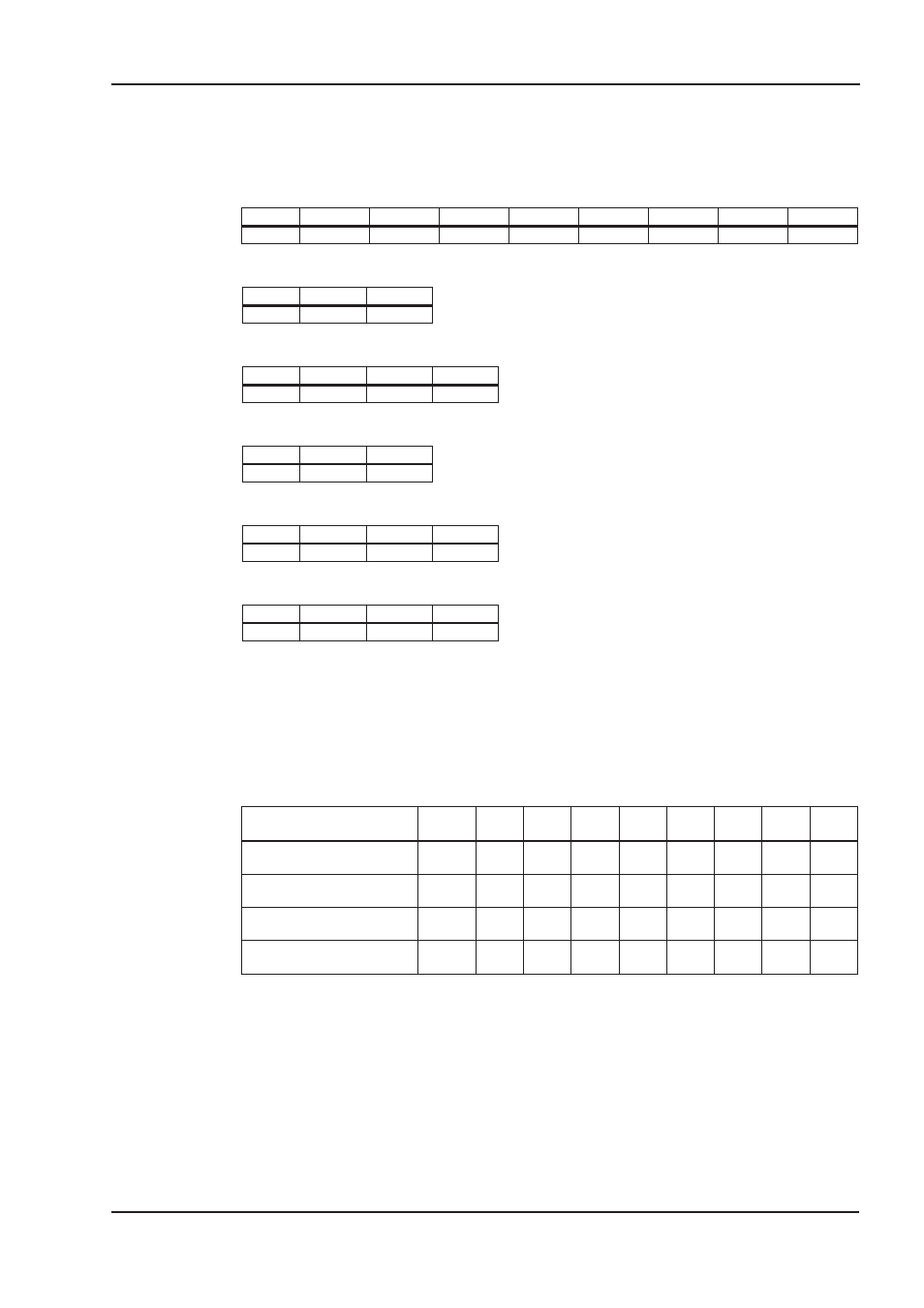7 ascii - kommunikation, Ascii - kommunikation, Anhang – BECKHOFF AX2500 CANopen communication profile Benutzerhandbuch
Seite 123

Eine Positionierung kann nun über Vorgabe der Sollwerte über das 1. RPDO und anschließenden
Start über das 2. RPDO. Dabei kommt der Handshake über New Setpoint (Controlword) und Set-
point acknowledge (status word) zum Einsatz.
a.: Sollwert
COB-ID
Byte 0
Byte 1
Byte 2
Byte 3
Byte 4
Byte 5
Byte 6
Byte 7
301
F4
01
00
00
E8
03
00
00
b.: Controlword mit „new setpoint“ – Bit (Bit 4) gesetzt
COB-ID
Byte 0
Byte 1
201
1F
00
c.: Warten, dass das CANopen status word „setpoint acknowledge“ (Bit 12) meldet: (z.B.)
COB-ID
Byte 0
Byte 1
Byte 2
181
27
15
03
d.: Controlword mit „new setpoint“ – Bit (Bit 4) sofort zurückgesetzt
COB-ID
Byte 0
Byte 1
201
0F
00
e.: Antrieb nimmt setpoint acknowledge zurück
COB-ID
Byte 0
Byte 1
Byte 2
181
27
01
03
Auf Abschluß der Positionierung warten
COB-ID
Byte 0
Byte 1
Byte 2
181
27
05
0A
6.1.7
ASCII - Kommunikation
Die ASCII-Kommunikation findet Sinnvollerweise über PDOs statt, da sie so effizienter genutzt wer-
den kann. Dazu muss sich die NMT-Zustandmaschine im Zustand “operational” befinden.
Beispiel:
Parameter T-Tacho (siehe Online-Hilfeder Inbetriebnahme-Software) lesen.
(Alle Daten Hexadezimal mit ASCII-Entsprechung in eckigen Klammern darunter)
Richtung
COB-ID
Byte 0 Byte 1 Byte 2 Byte 3 Byte 4 Byte 5 Byte 6 Byte 7
Master
Þ AX2xxx
301
47
h
[G]
56
h
[V]
46
h
[F]
42
h
[B]
54
h
[T]
0D
h
[CR]
0A
h
[LF]
0
h
[NUL]
AX2xxx
Þ Master
281
30
h
[0]
2E
h
[.]
36
h
[6]
0
h
[NUL]
0
h
[NUL]
0
h
[NUL]
0
h
[NUL]
0
h
[NUL]
AX2xxx
Þ Master
281
0D
h
[CR]
0A
h
[LF]
0
h
[NUL]
0
h
[NUL]
0
h
[NUL]
0
h
[NUL]
0
h
[NUL]
0
h
[NUL]
AX2xxx
Þ Master
281
2D
h
[-]
2D
h
[-]
3E
h
[>]
0
h
[NUL]
0
h
[NUL]
0
h
[NUL]
0
h
[NUL]
0
h
[NUL]
Erklärung:
In Telegramm 1 fragt der Master den Parameter “GVFBT” an, abgeschlossen von
den ASCII-Codes “CR LF”. Das freie letzte Byte wird mit ”NUL” gefüllt.
Die Antwort des AX2xxx erfolgt in Telegramm 2 mit dem Wert “0.6”, dem
Abschlusscode “CR LF” und dem Prompt für den nächsten Parameter bzw. das
nächste Kommando “—>”. Die Segmentierung der Antwort in drei Telegramme
erfolgt nicht zwingend, sondern hängt von der eingestellten Übertragungsrate und
internen Synchronisationsmechanismen ab.
CANopen für AX2000/2500
123
BECKHOFF
07/2007
Anhang